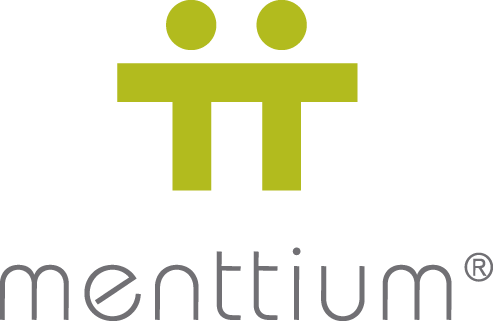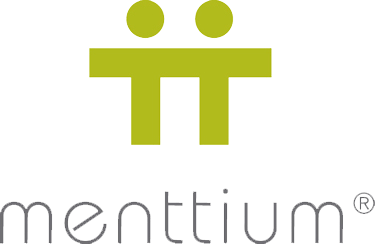
We have been measuring the success of our mentoring programs for over two decades and we’ve learned a thing or two in the process. We also know that your data analytics team or staff IO Psychologist might want to do it differently. Bottom line, we’re here to support you AND would HIGHLY recommend formally measuring the benefits of the program not merely from satisfaction rates, rather from the hard data of overall impact on retention, engagement, job performance, relationships, gains in key performance indicators, etc.
Measurement Overview
Pre-Mentoring Assessment for Goal Setting
Collects a baseline of data from mentees and their managers on their existing skill set in 31 key performance indicators that align with the six broad capabilities.
- Report Delivered to Mentee with Manager feedback with Goal Setting Tool
- Report Delivered to Manager with only Manager data with Goal Setting Tool
- Goal setting is encouraged with the mentee and manager together
Check-in #1 Data Collection
- Rapport development
- Satisfaction with meeting frequency
- Satisfaction with partners level of engagement and meeting outcomes
- Goal setting progress
Check-in #1 Aggregate Client Report
We aggregate the data and create a client specific report for your review that protects the anonymity of the survey respondents. We also schedule a 1 hour debrief to walk through survey results and provide comparisons against the hundreds of programs we have designed before allowing us to pivot in the moment to course correct or provide reassurance that your participants are on the right track.
Check-in #2 Data Collection
- Trust established in partnership
- Goal progression
- Goal satisfaction
- Impact on retention (intent to stay) and engagement
- Impact on relationships
- Impact on confidence, leadership skills, job performance
Check-in #2 Aggregate Client Report
Contact us to see a sample report.
Return on Mentoring Data Collection (End of Program)
- Retention
- Engagement
- Job, Team, Company Impact
- Impact on Relationships
- Impact on Confidence
- Impact on Leadership Skills
- Gains in capabilities aligned with goals
Return on Mentoring Aggregate Client Report (End of Program)
Contact us to see a sample report.
Post-Mentoring Assessment
Measuring Gains in 31 KPI
- Aggregate Report Provided to Client
- Personalized Report Delivered to Mentee
- Personalized Report Delivered to Manager
- Personalized Report Delivered to Mentor
We leverage FormAssembly integrated with Salesforce and Conga for data collection and report generation. Then, we manually scrub all reports of proper names and any unique identifiers like projects, divisions, etc. The goal is that you receive anonymous feedback on the overall success of program participants. We can also alert you to partnerships in trouble or those not responding to surveys to allow you the opportunity to provide additional support to increase overall impact.
Don’t miss this opportunity to formalize the impact – you’ll want your senior leaders and senior champions to see the value of what you are designing and implementing.
PRE-MENTORING ASSESSMENT
Collects a baseline of data existing skill set in 31 key performance indicators that align with the six broad capabilities listed below.
MENTEE
MANAGER
MENTOR
CHECK-IN #1
- Meeting Frequency
- Rapport Building
- Goal Setting
- Match Satisfaction
MENTEE
MANAGER
MENTOR
CHECK-IN #2
- Trust Building
- Goal Progression
- Meeting Expectations
- Impact on Retention, Engagement, Relationships
MENTEE
MANAGER
MENTOR
RETURN ON MENTORING & POST-MENTORING ASSESSMENT
- Goal Achievement
- Impact on Retention, Engagement, Relationships, Confidence, Leadership Skills
- Gains in KPI
MENTEE
MANAGER
MENTOR
OUR CAPABILITIES
ACCOUNTABILITY
Employees who demonstrate strong “accountability” capabilities effectively balance work and personal demands. They apply strategies to ask for, receive, and act on performance feedback. They can describe the metrics used to assess their company’s achievement of business performance objectives. They effectively manage relationships with their boss and other senior leaders. Finally, these employees consistently demonstrate confidence to overcome challenges in their current work environment.
COLLABORATION
Employees demonstrate an understanding of the impact their communication style preference has on work relationships. They apply strategies for working cross-functionally, conflict resolution, and intercultural communication. Further, they effectively navigate organizational politics and communicate ideas to senior leadership.
INNOVATION
Employees act to remove barriers for idea implementation and confidently take risks in their organization. They ask questions to identify underlying assumptions and expectations on the part of co-workers and customers. They thrive during periods of change and communicate a clear process for moving from status quo to achieving a vision.
LEARNING & DEVELOPMENT
Employees who demonstrate strong “learning and development” capabilities set development goals and execute plans based on those goals. They leverage internal networks to support their contribution to the organization. They take on projects and roles that stretch their existing skill-set and enable them to refine and enhance their leadership abilities. These employees not only focus on needed development areas, but also position themselves in a way that exemplifies and leverages their strengths.
MARKET ORIENTATION
Employees who demonstrate strong “market orientation” capabilities clearly understand the big picture, corporate perspective, regarding decisions made about creating value for customers and other stakeholders. They anticipate how changes in market conditions affect their company’s long term objectives. Further, they identify the strengths and weaknesses of alternative solutions to market and/or customer needs.
VISION, MISSION, & VALUES ALIGNMENT
Employees offer ideas and opinions about how to achieve the organization’s vision. Further they clearly understand the connection between their role and achieving their company’s vision. They display an executive presence which enables them to influence senior leaders. And, they consistently promote respect and inclusion in all of their work relationships.

